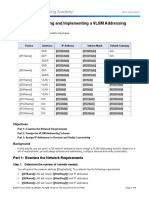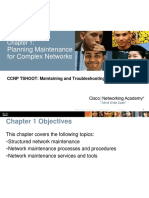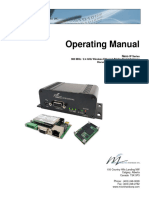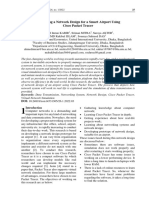0% found this document useful (0 votes)
295 views21 pagesNetworking Final Assessment
The document discusses a proposed upgrade to the network infrastructure of Elektron Industries. It describes challenges with the current outdated network, including cyberattacks and vulnerabilities. The proposed upgrade aims to improve security, enable seamless collaboration across locations, and position Elektron for future growth by aligning with government security standards.
Uploaded by
DurodolaCopyright
© © All Rights Reserved
We take content rights seriously. If you suspect this is your content, claim it here.
Available Formats
Download as DOCX, PDF, TXT or read online on Scribd
0% found this document useful (0 votes)
295 views21 pagesNetworking Final Assessment
The document discusses a proposed upgrade to the network infrastructure of Elektron Industries. It describes challenges with the current outdated network, including cyberattacks and vulnerabilities. The proposed upgrade aims to improve security, enable seamless collaboration across locations, and position Elektron for future growth by aligning with government security standards.
Uploaded by
DurodolaCopyright
© © All Rights Reserved
We take content rights seriously. If you suspect this is your content, claim it here.
Available Formats
Download as DOCX, PDF, TXT or read online on Scribd
/ 21

























































































